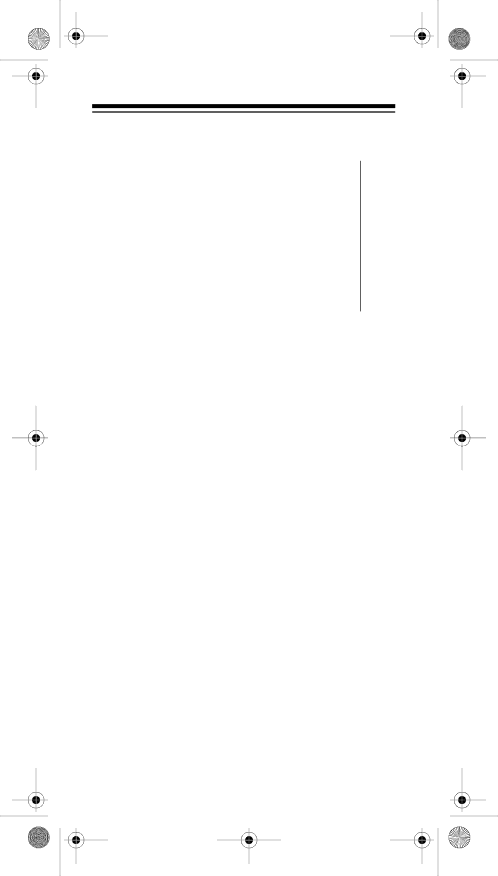
B |
|
|
| Size Code |
|
|
| |
L |
|
|
|
|
|
|
|
|
O |
|
|
|
|
|
|
|
|
C | 9 | 10 | 11 | 12 | 13 | 14 | 15 | 16 |
K |
|
|
|
|
|
|
|
|
|
|
|
|
|
|
|
|
|
|
|
|
|
|
|
|
|
|
4 | S0 | S0 | S0 | S0 | S4 | S4 | S11 | S0 |
|
|
|
|
|
|
|
|
|
5 | S0 | S0 | S0 | S0 | S0 | S4 | S0 | S0 |
|
|
|
|
|
|
|
|
|
6 | S0 | S4 | S0 | S0 | S0 | S12 | S12 | S12 |
|
|
|
|
|
|
|
|
|
7 | S0 | S4 | S0 | S4 | S0 | — | — | — |
|
|
|
|
|
|
|
|
|
7.Enter the size code and press ENTER for each entry. If you make a mistake, press CL and enter the cor- rect size code.
Note: The default setting of the bank is for Motorola Type II. However, after you set Type I and if you want to return to Type II, press 15 at Step 5.
8.To confirm the input, repeat Steps
TALK GROUP ID’S
You can program up to 100 talk group ID’s in each bank. When the scanner stops on a transmission in the LTR, Motorola, or EDACS mode, it checks to see if the ID has been stored. In the Closed mode, the scanner only stops on the transmission and displays its text tag if you have stored and not locked out the ID. In the Open mode, the scanner always stops on a transmission, but it displays the ID’s text tag if you have stored the ID.
Storing Talk Group ID’s
To store a talk group ID when scanning, press TRUNK when the scanner stops on a transmission. The bottom line changes to ID#XXXX indicating that the ID is stored.
60